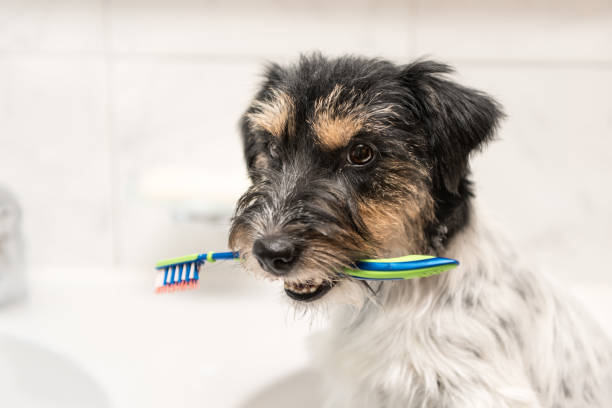It is commonly believed that dogs' teeth are different from human teeth, but they are susceptible to many of the same dental health issues, including cavities. Cavities in dogs are characterized by small holes or weaknesses in the tooth structure. In this discussion, we will delve into what cavities in dogs actually are, their appearance, methods of diagnosis, and preventive measures to avoid their occurrence.
What are cavities in dogs' teeth?
Cavities in a dog's teeth occur when there are small holes in the tooth caused by decay. These cavities are a result of bacterial build-up in the dog's mouth. When bacteria accumulate, they produce acid that can erode the tooth structure and cause a loss of calcium present in the enamel. As the calcium is depleted, the tooth begins to decay, leading to the formation of small holes or cavities.
Fortunately, cavities in dogs are relatively uncommon compared to cavities in human teeth. This is partly due to the shape of a dog's teeth. Unlike humans, whose teeth have a horizontal crown shape with flat sides and tops, most of a dog's teeth are separate and shaped like pointy cones. This conical shape makes it more challenging for food deposits to cling to the teeth's surface, reducing the opportunity for bacterial growth.
However, it's important to note that the molars at the back of a dog's mouth are an exception to this conical shape. Additionally, dogs have saliva with a more alkaline pH, which helps neutralize acids and lowers the risk of cavities in dogs.
What do dog cavities look like?
Identifying dog cavities can be challenging for pet owners. When examining your dog's teeth for cavities, look for small, darker holes on the tooth's surface. These holes may initially appear small externally but can extend deeper into the tooth.
Diagnosing cavities in dogs
When your vet diagnoses cavities in dogs, they will assess the severity of the cavity and the extent of the damage. This evaluation is typically done using a probe and may require anesthesia. Based on their findings, your vet will assign a stage to the cavity. There are five stages:
Stage 1: Only the enamel is affected.
Stage 2: Both enamel and dentin are affected.
Stage 3: Enamel, dentin, and pulp chamber are affected.
Stage 4: Structural damage to the crown.
Stage 5: Most of the crown is lost, with exposed roots.
Once the stage is determined, the vet will recommend an appropriate treatment plan, which may involve removing the affected tooth.
Recovering from dog cavity treatments
After your dog has undergone surgery for a cavity, it is essential to closely monitor their behavior and oral condition. If you observe anything unusual in either aspect, it's important to inform your vet for further guidance. Pay particular attention when examining the area of the mouth that received treatment. Your dog is likely to be prescribed pain relief or antibiotics following the surgery. Your vet may also recommend temporarily modifying your dog's diet.
Additionally, it is crucial to schedule a follow-up appointment with your vet to ensure proper healing and assess the overall recovery process.
Preventing cavities in dogs
To minimize the occurrence of cavities in your dog's mouth, it is important to establish a proper dental health routine. This involves regularly brushing your dog's teeth and providing them with dental chews.





